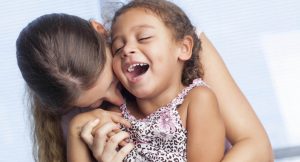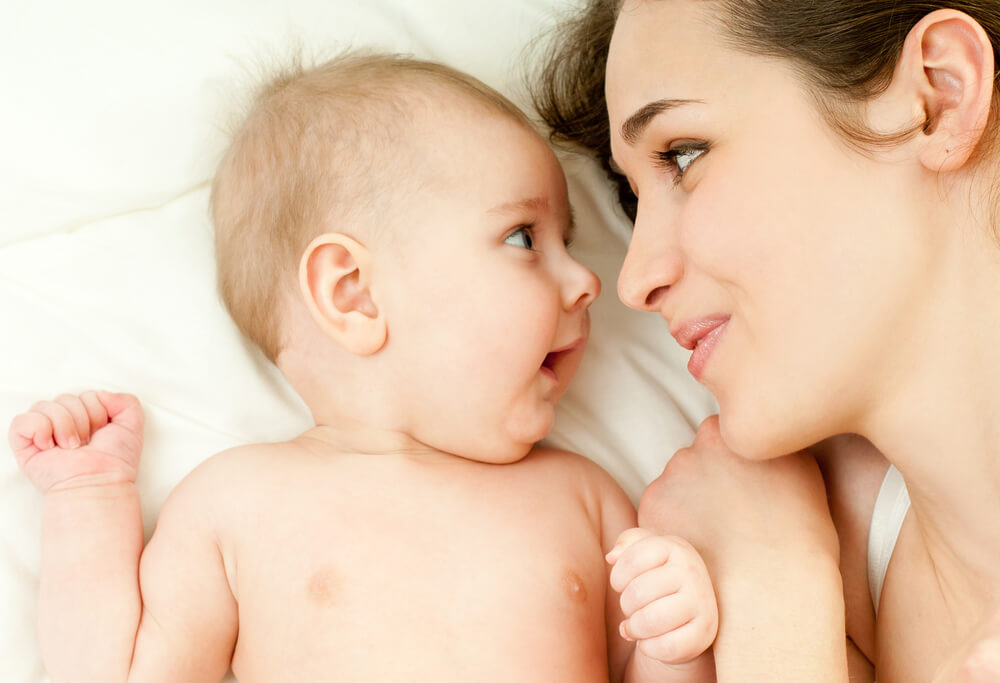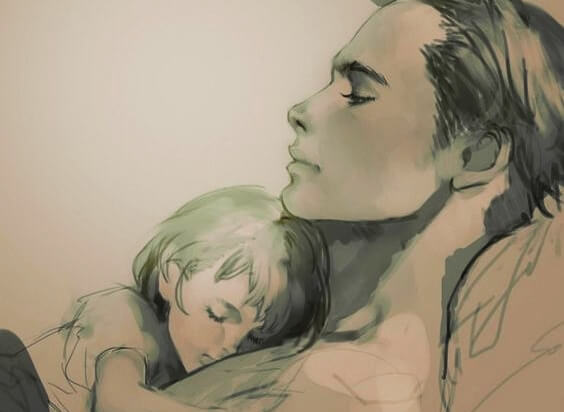Attachment Shapes Children's Personalities


Reviewed and approved by the psychologist María Alejandra Castro Arbeláez
Attachment is one of the most studied phenomena in pediatrics nowadays. According to specialists, whether in childhood development or in child rearing, the effects of attachment offer valuable insights when it comes to studying human behavior.
Attachment is capable of considerably affecting children’s personalities. For those who are new to learning about attachment, it refers to the emotional bond between adults and children. The adult could be the parents or caregivers.
The theory of attachment has been studied for years. It was developed in the middle of the twentieth century by a British psychiatrist named John Bowlby.
His chaotic childhood fed into the hypothesis that attachment molds children’s personalities. That’s why, together with his collaborator, Mary Ainsworth, they came up with an unusual process of testing.
This type of test was conducted on one-year-olds. They separated these babies from their parents for a short period of time and later reunited them. The objective was to observe their behavior upon reuniting. The result was truly surprising.
Attachment: A study with marvelous results

This joint study yielded amazing results. For example, it was observed that when a child experiences a certain amount of stress, this will be eliminated immediately by being in direct contact with their parents.
On the other hand, the study teaches a great lesson about the relationship between parents and children. Specialists have been able to confirm the importance of attachment. Children’s behavior during stressful situations indicates the strength of the bond with their parents.
This means that everything Mom or Dad do at home predicts the child’s behavior in these circumstances. So, when a child believes that their father will care for them, they will demand their attention. An upset or afraid child will quickly calm down when they are in contact with their parents.
This is what researchers call “secure attachment.” According to child psychologist Susan Berger, the parents should be attentive when their child is stressed. This allows the child to feel safe that their caregivers will do everything possible to make things better.
What is “insecure attachment?”
On the other extreme, there are children who cannot be consoled. Their adult caregivers cannot provide relief to them in stressful situations. This is called “insecure attachment” in the field of psychology.
In this case, it is possible that when the parents return, the child turns away to avoid looking at them. According to specialists, this is not an indicator of calm or independence. Scientific studies show that this child prefers to take on the situation alone. This types of stress is shown through a fast beating heart.
Science goes even further and calls this behavior “insecure-avoidant.” However, it is possible to distinguish a third group of children who are difficult to calm. These are the children that react with aggression and rage. They are the “insecure-resistant.”

Although it may be difficult to believe, many children are subject to excessive pain. Sexual abuse, child abuse, severe stress or institutional care are just a few examples.
A pattern referred to as “organized” is the common factor in these situations. There is no direct and consistent strategy to deal with these situations.
Attachment is vitally important in childhood
Finally, experts clarify that when discussing attachment, whether in childhood development or child-rearing, we are not necessarily referring to “attachment parenting.”
This generally emphasizes the literal closeness between parents and children. With this in mind, experts stress the importance of avoiding stress and separation between caregivers and children.
Child rearing with attachment creates strong and healthy emotional bonds between children and their parents for life.
-Anonymous-
Attachment is one of the most studied phenomena in pediatrics nowadays. According to specialists, whether in childhood development or in child rearing, the effects of attachment offer valuable insights when it comes to studying human behavior.
Attachment is capable of considerably affecting children’s personalities. For those who are new to learning about attachment, it refers to the emotional bond between adults and children. The adult could be the parents or caregivers.
The theory of attachment has been studied for years. It was developed in the middle of the twentieth century by a British psychiatrist named John Bowlby.
His chaotic childhood fed into the hypothesis that attachment molds children’s personalities. That’s why, together with his collaborator, Mary Ainsworth, they came up with an unusual process of testing.
This type of test was conducted on one-year-olds. They separated these babies from their parents for a short period of time and later reunited them. The objective was to observe their behavior upon reuniting. The result was truly surprising.
Attachment: A study with marvelous results

This joint study yielded amazing results. For example, it was observed that when a child experiences a certain amount of stress, this will be eliminated immediately by being in direct contact with their parents.
On the other hand, the study teaches a great lesson about the relationship between parents and children. Specialists have been able to confirm the importance of attachment. Children’s behavior during stressful situations indicates the strength of the bond with their parents.
This means that everything Mom or Dad do at home predicts the child’s behavior in these circumstances. So, when a child believes that their father will care for them, they will demand their attention. An upset or afraid child will quickly calm down when they are in contact with their parents.
This is what researchers call “secure attachment.” According to child psychologist Susan Berger, the parents should be attentive when their child is stressed. This allows the child to feel safe that their caregivers will do everything possible to make things better.
What is “insecure attachment?”
On the other extreme, there are children who cannot be consoled. Their adult caregivers cannot provide relief to them in stressful situations. This is called “insecure attachment” in the field of psychology.
In this case, it is possible that when the parents return, the child turns away to avoid looking at them. According to specialists, this is not an indicator of calm or independence. Scientific studies show that this child prefers to take on the situation alone. This types of stress is shown through a fast beating heart.
Science goes even further and calls this behavior “insecure-avoidant.” However, it is possible to distinguish a third group of children who are difficult to calm. These are the children that react with aggression and rage. They are the “insecure-resistant.”

Although it may be difficult to believe, many children are subject to excessive pain. Sexual abuse, child abuse, severe stress or institutional care are just a few examples.
A pattern referred to as “organized” is the common factor in these situations. There is no direct and consistent strategy to deal with these situations.
Attachment is vitally important in childhood
Finally, experts clarify that when discussing attachment, whether in childhood development or child-rearing, we are not necessarily referring to “attachment parenting.”
This generally emphasizes the literal closeness between parents and children. With this in mind, experts stress the importance of avoiding stress and separation between caregivers and children.
Child rearing with attachment creates strong and healthy emotional bonds between children and their parents for life.
-Anonymous-
All cited sources were thoroughly reviewed by our team to ensure their quality, reliability, currency, and validity. The bibliography of this article was considered reliable and of academic or scientific accuracy.
- Barudy, J., & Dantagnan, M. (2005). Los buenos tratos a la infancia: Parentalidad, apego y resiliencia. Editorial Gedisa.
- Garrido-Rojas, L. (2006). Apego, emoción y regulación emocional. Implicaciones para la salud. Revista latinoamericana de psicología, 38(3), 493-507. https://www.redalyc.org/pdf/805/80538304.pdf
- Marrone, M., Diamond, N., Juri, L., & Bleichmar, H. (2001). La teoría del apego: un enfoque actual. Madrid: Psimática.
- Mosquera D, Gonzalez, A (2009) Escala de Apego y Patrones Relacionales.
- Mosquera, D., & González, A. (2013). Del apego temprano a los síntomas del trastorno límite de personalidad. Revista Digital de Medicina Psicosomática y Psicoterapia, 3(3), 1-33. http://www.psicociencias.com/pdf_noticias/Apego_y_TLP.pdf
- Shaffer, D. R., & del Barrio Martínez, C. (2002). Desarrollo social y de la personalidad. Madrid: Thomson.
This text is provided for informational purposes only and does not replace consultation with a professional. If in doubt, consult your specialist.








